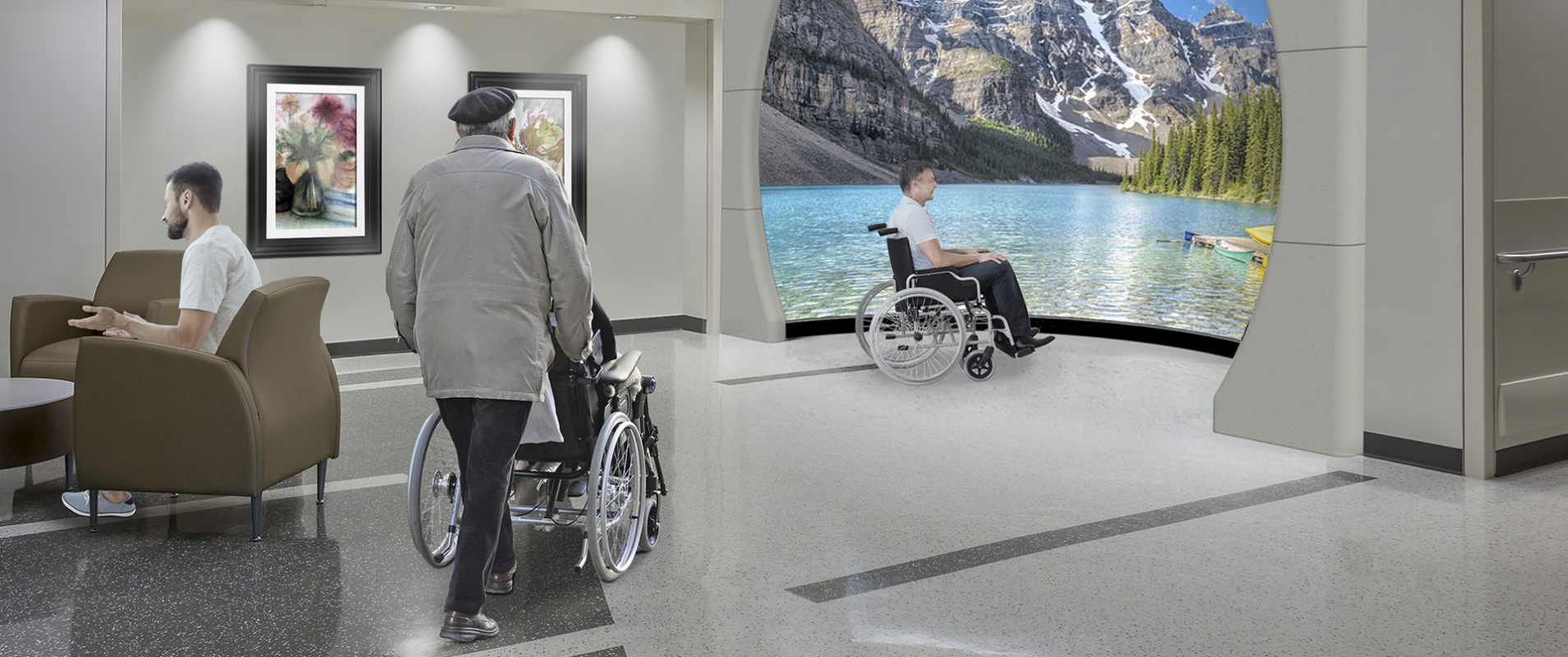Your medical rehabilitations center is getting an upgrade
When thinking about physical rehabilitation, what comes to mind? Most likely the traditional model of orthopedic rehab, which treats musculoskeletal injuries such as osteoarthritis, tennis elbow, and fibromyalgia. But rehab also extends to injuries, diseases or disorders of the nervous system, such as ALS and Parkinson’s. Neurological impairments may affect any part of the body. One of the most common examples is the impact on lower limb motor functions, which leads to walking limitations and additional motor and cognitive task impairment.
Researchers are now looking for novel methodologies to improve and make motor recovery more engaging and effective for patients. Virtual Reality (VR) technology has recently emerged as a valid addition to conventional therapy that is both solutions-based and low-cost. VR-based therapy can be tailored to the patients’ needs and provides a positive learning experience that is both engaging and motivating. Additionally, virtual rehabilitation centers allow patients to receive care anytime, and give therapists the ability to monitor several patients via the web or tablets, thus increasing therapist productivity and reducing burnout.
What’s virtual is now real
There are many drawbacks to traditional rehabilitation. It can be repetitive by nature, which can cause patients to lose motivation over time. Additionally, it requires at least one therapist to work with the patient, increasing the need for resources and costs to the healthcare system. Doctors are constantly challenged to find quality low-cost rehabilitation centers, which are in short supply. Typically, there is an uneven distribution of therapists and facilities, so patients are increasingly forced to travel to these practitioners. Moreover, traditional therapy doesn’t provide objective data or the ability to monitor patients’ recovery at home.
Rehabilitation virtual reality treatments are an efficient way to enhance the existing rehab process. They allow patients with different neurological disorders to perform actions they are not capable of in real life. 3D virtual environments and video game-like tasks can also enhance patient engagement and motivation, and they provide immediate feedback. And for doctors and researchers, VR allows for measurable neurophysiological analysis, thus improving outcomes for patients.
Upgrade your facility
Virtual Reality is cutting-edge technology that is built with the potential to transform medical industries. It can expedite patient goals, increase therapist productivity, and support the vast data sets required by advancements in medical instrumentation and image acquisition. From neurological treatments to exposure-based treatments for phobias or post-traumatic stress disorder (PTSD), VR-based therapy also creates consistent stimulus environments for clinicians, producing controllable results. And immersive VR rehab centers provide flexibility and convenience for patients and therapists alike.
Virtual Reality healthcare solutions can unlock the body’s potential to heal itself. The next generation of rehabilitation is here.

